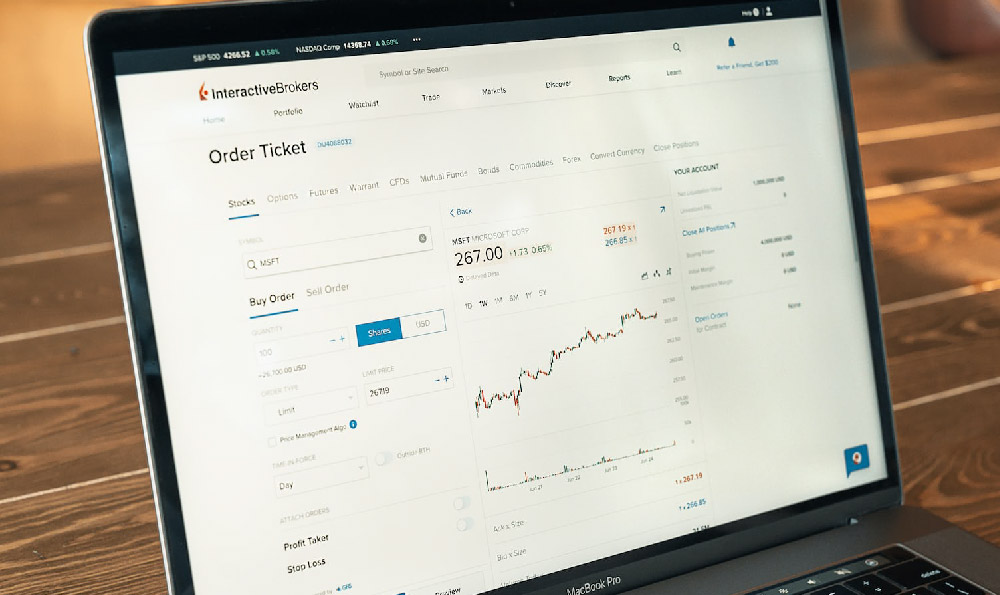An investment account serves as a foundational tool for anyone looking to grow their wealth through financial markets. Think of it as a container, specifically designed to hold various investments such as stocks, bonds, mutual funds, exchange-traded funds (ETFs), and even, in some cases, alternative assets like cryptocurrency (though generally not within traditional investment accounts). Its primary purpose is to facilitate the buying and selling of these assets, offering a structured and regulated environment for your investment activities.
Unlike a regular savings account at a bank, an investment account doesn't typically offer a guaranteed return or FDIC insurance. Instead, your returns depend on the performance of the assets you hold within the account. This introduces an element of risk, as the value of your investments can fluctuate based on market conditions and the specific performance of the companies or assets you've invested in. However, this risk is also what provides the potential for significantly higher returns than traditional savings accounts or certificates of deposit (CDs) can offer, especially over the long term.
There are various types of investment accounts, each with its own characteristics and tax implications. Understanding these differences is crucial for choosing the right account to align with your financial goals and circumstances.

A taxable brokerage account is perhaps the most straightforward. It allows you to buy and sell a wide range of investments, and any profits you make are subject to capital gains taxes. These taxes are paid when you sell an investment for more than you bought it for. While taxable accounts don't offer any upfront tax benefits, they provide the greatest flexibility, as you can withdraw your money at any time without penalty.
Then there are retirement accounts, designed specifically for saving for retirement. These often offer tax advantages, but also come with certain restrictions on when and how you can withdraw your money. Common types include:
- Traditional IRA (Individual Retirement Account): Contributions may be tax-deductible, reducing your taxable income in the year you contribute. However, withdrawals in retirement are taxed as ordinary income.
- Roth IRA: Contributions are made with after-tax dollars, meaning you don't get a tax deduction upfront. However, qualified withdrawals in retirement are tax-free.
- 401(k) and 403(b): These are employer-sponsored retirement plans. Many employers offer matching contributions, which is essentially free money towards your retirement savings. Similar to Traditional IRAs, contributions are often tax-deductible, and withdrawals are taxed in retirement. Roth 401(k) options also exist, mirroring the tax structure of Roth IRAs.
There are also 529 plans, which are designed for saving for education expenses. These plans offer tax advantages on contributions or earnings, and withdrawals are tax-free as long as the money is used for qualified education expenses.
So, how do you actually start an investment account? The process is generally quite simple and can often be done online. Here are the typical steps:
-
Determine Your Financial Goals: Before opening an account, think carefully about what you want to achieve with your investments. Are you saving for retirement, a down payment on a house, your children's education, or something else entirely? Your goals will influence the type of account you choose and the investments you make. Also, consider your risk tolerance. How comfortable are you with the possibility of losing money in exchange for potentially higher returns?
-
Choose a Brokerage Firm: Numerous brokerage firms offer investment accounts, ranging from large, well-established institutions to smaller, online-only platforms. Consider factors such as fees (commissions, account maintenance fees, etc.), investment options (stocks, bonds, mutual funds, ETFs, etc.), research tools and educational resources, and customer service. Do some research and compare different brokers to find one that meets your needs.
-
Complete an Application: Once you've chosen a brokerage, you'll need to fill out an application, which typically involves providing personal information such as your name, address, Social Security number, and employment information. You'll also need to answer questions about your investment experience and risk tolerance.
-
Fund Your Account: After your application is approved, you'll need to fund your account. This can usually be done electronically via bank transfer, wire transfer, or by mailing a check. Minimum deposit requirements vary depending on the brokerage.
-
Choose Your Investments: Once your account is funded, you can start buying and selling investments. If you're new to investing, consider starting with low-cost index funds or ETFs, which provide diversification and track the performance of a broad market index. As you become more experienced, you can explore other investment options.
-
Monitor Your Investments Regularly: It's essential to monitor your investments periodically to ensure they're still aligned with your goals and risk tolerance. Review your portfolio regularly and make adjustments as needed. Don't panic sell during market downturns, but also don't be afraid to rebalance your portfolio to maintain your desired asset allocation.
Remember, investing involves risk. Before making any investment decisions, it's always a good idea to consult with a qualified financial advisor. They can help you assess your financial situation, develop a personalized investment strategy, and navigate the complexities of the financial markets. They can also help you understand the tax implications of different investment accounts and strategies. Approach investing with a long-term perspective, and be prepared for market fluctuations. Patience and discipline are key to achieving your financial goals. Diversification is another crucial element of risk management. Spreading your investments across different asset classes, industries, and geographic regions can help reduce the impact of any single investment performing poorly. Avoid putting all your eggs in one basket. Continuous learning is also important. Stay informed about market trends, economic news, and investment strategies. There are numerous online resources, books, and courses available to help you improve your financial literacy. The more you know, the better equipped you'll be to make informed investment decisions. Be wary of get-rich-quick schemes and promises of guaranteed returns. These are often scams and can lead to significant financial losses. If something sounds too good to be true, it probably is. Finally, understand the fees associated with your investment account and the investments you hold. High fees can eat into your returns over time. Choose low-cost options whenever possible.












